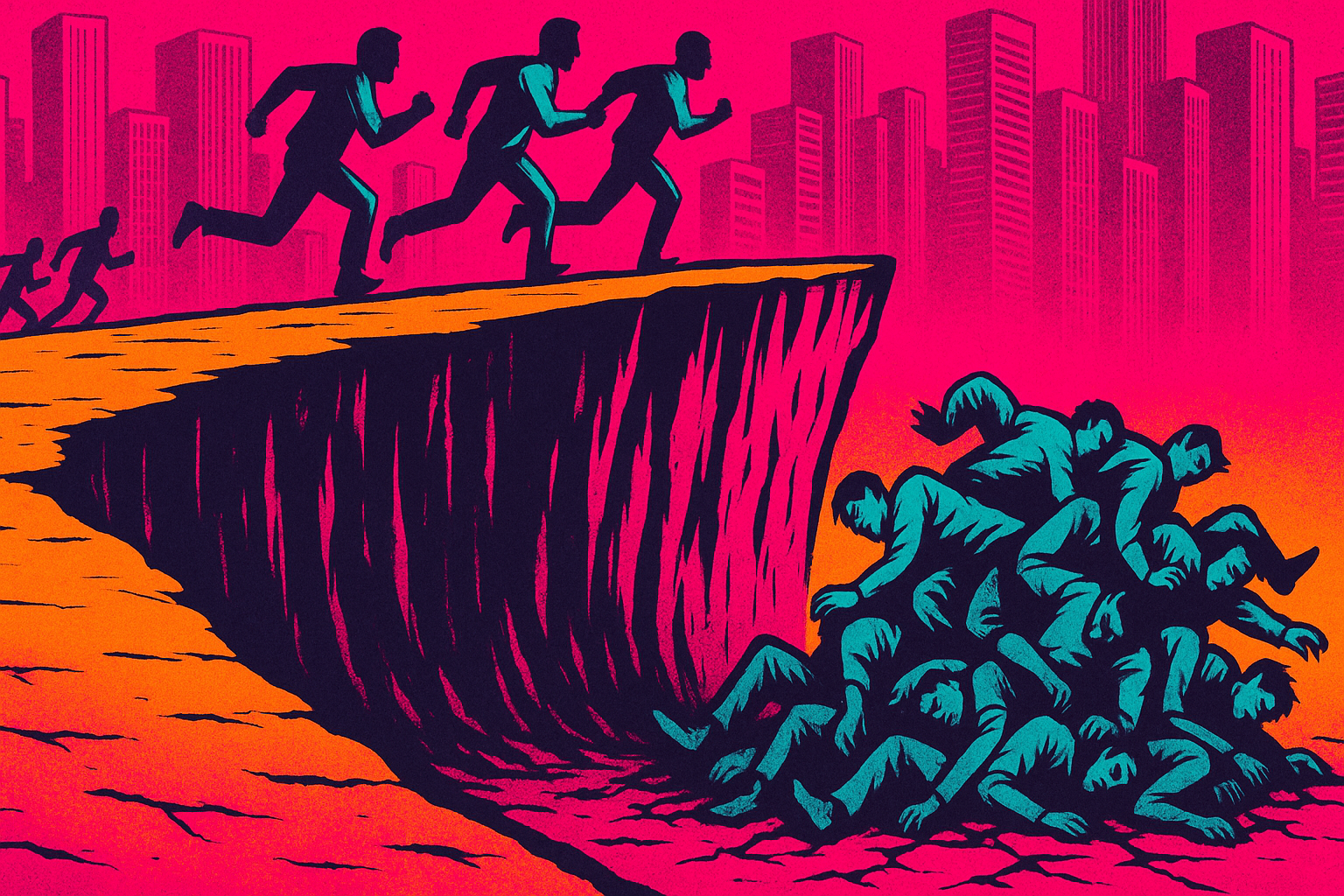The Invisible Cliff: Why Startups Die After Finding Product-Market Fit

July 10, 2025
Lorde Astor West 🐢 Contributor, Founder & CEO RadHash
Ask any founder what keeps them up at night, and they'll tell you it’s the runway. Ask them again at year three, and they’ll tell you it’s everything—tech debt, churn, team turnover, and investor silence.
Welcome to the part of startup life no one talks about: the cliff between MVP and scalability. It doesn’t have a name in most playbooks. But it should. We call it The Invisible Cliff.
It’s where up to 80% of venture-backed startups collapse—not from lack of market, but from missteps made in the rush to scale.
From MVP to Mayday
The startup narrative has a script:
- Build a Minimum Viable Product (MVP)
- Launch
- Raise Seed
- Grow
- Raise Series A
But between steps 3 and 5 is a blind spot—a dangerous period between early traction and operational maturity. That’s where most startups fall.
According to Harvard Business School, around 75% of venture-backed startups never return capital to investors. Startup Genome adds that 70% of startups scale prematurely. And CB Insights has consistently shown that failures cluster not at launch—but during growth.
In other words: MVPs don’t fail—systems do.
The Cliff Is Structural, Not Emotional
This isn’t about founders burning out or cofounder disputes (though those happen too). The cliff is built into the startup growth model itself:
- Overhiring before workflows are defined
- Engineering complexity ballooning without infrastructure maturity
- Product lines expanding faster than market insight
- Revenue targets rising while churn goes unaddressed
The pressure to “look like an A-round company” comes fast—and founders respond with velocity. But when velocity outpaces clarity, everything breaks.
Fragmentation: The Silent Killer
What happens after the MVP works is fragmentation—across product, process, and people:
- Teams start building parallel features with no integration plan.
- Leadership layers form without cultural continuity.
- Metrics misalign: acquisition outpaces activation, and growth obscures retention issues.
Suddenly, a startup that had product-market fit is riddled with technical debt, morale erosion, and a roadmap built more for investor optics than customer outcomes.
This is where growth turns into gravity.
Scaling Isn’t the Problem. Premature Scaling Is.
The ecosystem pushes founders to “move fast” as if that’s synonymous with success. But startup mortality suggests otherwise.
“Scaling” without operational readiness often looks like:
- Burn rates tripling
- Churn spiking
- CTOs buried in replatforming
- Series A rounds delayed—or worse, down rounds
It’s not speed that kills. It’s acceleration without traction.
Who Survives the Cliff?
Startups that make it past year five aren’t just lucky. They usually did three things differently:
- Built resilient systems early They didn’t wait for the A-round to think about observability, reliability, or customer success.
- Practiced financial discipline They hired slower. They resisted over-automation. They reinvested profits instead of burning capital for optics.
- Protected the product core Instead of chasing features, they doubled down on depth and retained early users through consistent value.
Founders: You’re Not Alone
If you’re in years 2–5 and the hype is fading, you’re not failing—you’re facing the cliff.
The next move isn’t always to scale faster. Sometimes, it’s to rebuild the bridge.
Because what kills most startups isn’t lack of demand—it’s structural fragmentation and forced acceleration. And now that you can see the cliff, you don’t have to fall off it.
Investors: Protect Your Investment
Find out why investors are investing in RadHash
10K Users to Gain Access to Hash aiOS
RadHash and Cloud Underground Partner to Deliver Sovereign Infrastructure for Hybrid, Self-Hosted AI-Native Applications to user base
🚨 Read
🔧🚀✨
Build Your Startupverse™
Own Your Digital Economy
Web App Made with RadHash
RadHash LTD - a Delaware Company EST 2023